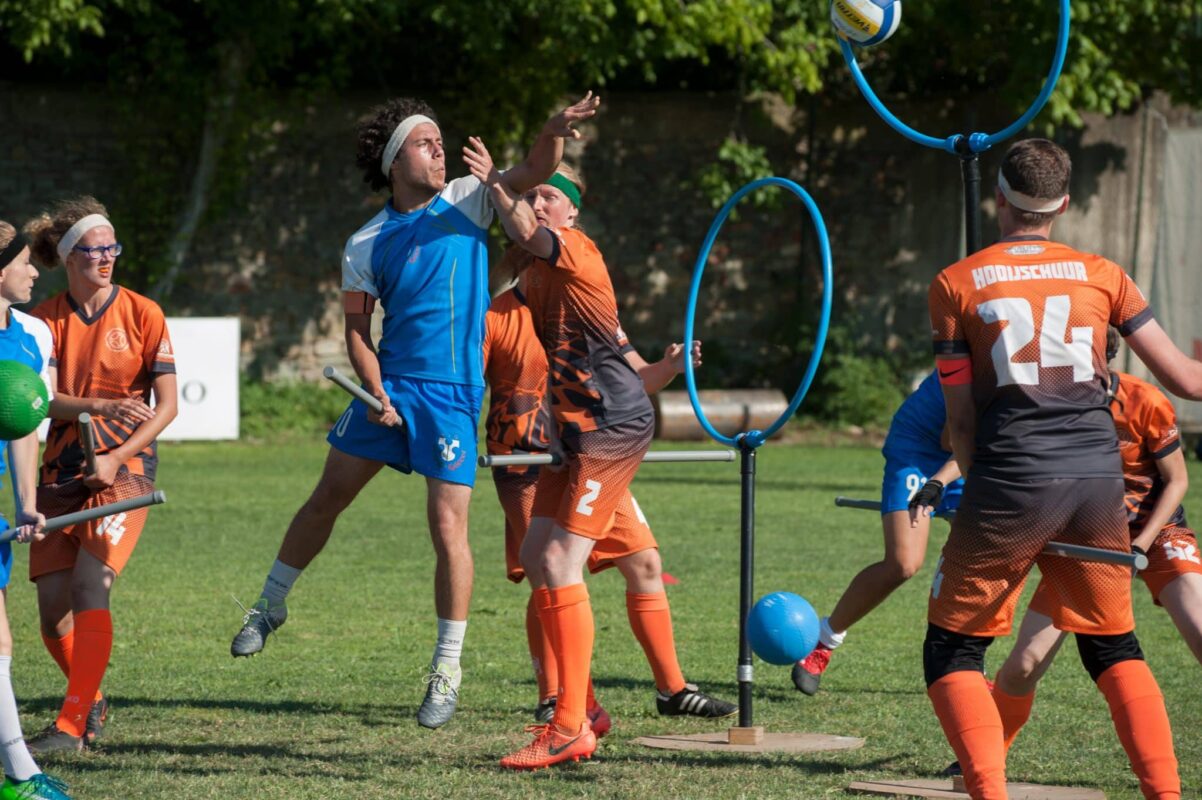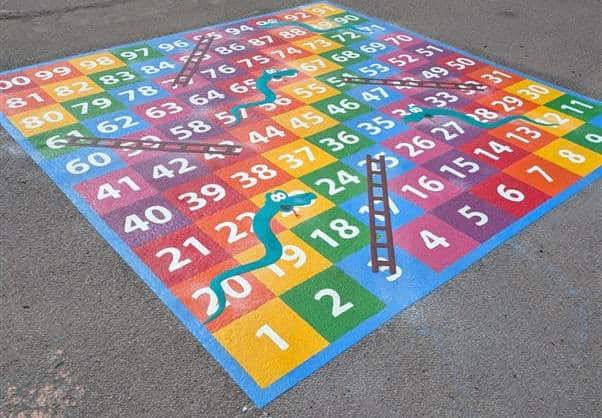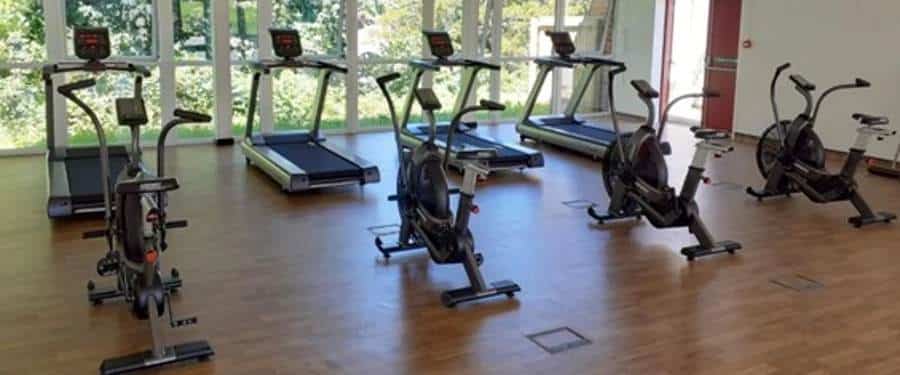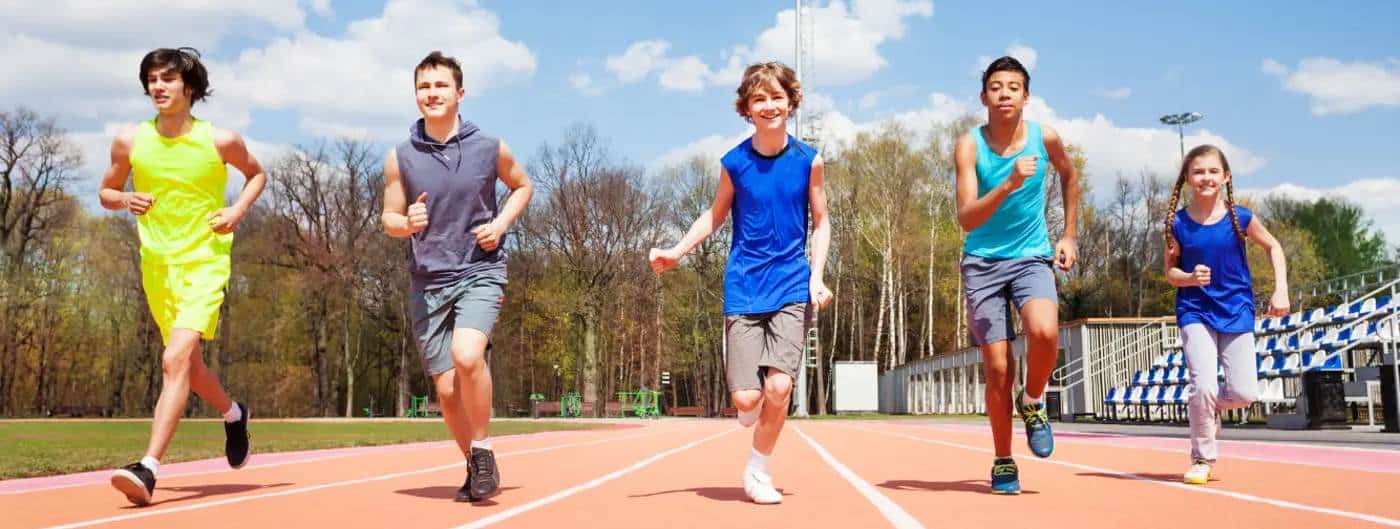[row]
[col span__sm=”12″]
[row_inner]
[col_inner span=”6″ span__sm=”12″ divider=”true” padding=”0px 0px 0px 0px” margin=”0px 0px 0px 0px”]
[ux_text class=”article-intro”]
The positive effects of being active, working alongside others and getting plenty of outdoor time are well documented. However, the impact of this positive effect on other areas of life and learning is also significant, especially with exam time looming.
Whereas it used to be expected that sport and other leisure activities went on the back burner in the run up to exam time, current thinking and research indicates that this may in fact be detrimental to academic and personal success.
‘Research* clearly shows not just the importance of young people taking part in sport and physical activity at school, but crucially continuing to take part throughout exam season. We know that healthy and happy children learn better.’
Ali Oliver MBE, CEO at Youth Sport Trust (*Manchester Metropolitan University, on behalf of the Youth Sport Trust (YST) and HMC The Heads’ Conference)
‘Ensuring that pupils have plenty of active involvement in sport at school throughout the year – including and especially in the run-up to exams – helps them to maintain a healthy balance and navigate teenage life’s pressures and demands.’
Kevin Knibbs, Chair of the HMC Sports Committee and Headmaster, Hampton School
It is perfectly understandable why students, parents and teachers may feel the need to go into academic-work-focus overload as exam season approaches; this seems a logical response to an intense challenge and desire for good grades. However, the ‘all work and no play’ approach can not only add stress to an already potentially stressful time but can even, ironically, have a negative impact on final outcome or grades. Everyone needs a break from study, revision and pure academia every now and again.
However, it is how this break time is used that can either just provide a much-needed rest…or provide a much-needed rest AND simultaneously boost academic success and general wellbeing.
Schilling et al (2006) report that ‘being active and moving during play facilitates verbal, visual, and kinaesthetic learning.’
Stead and Neville (2010) note that ‘as little as ten minutes of additional organised physical activity in or outside the classroom implemented into the school day improves classroom behaviour, and consequently may enhance academic performance.’
The UK Goevernment is also aware that ‘There is a growing body of research, both in the UK and internationally, which has found a positive association between participation in physical activity, and higher academic performance in young people.’ (Chaddock et al, 2012; Singh et al, 2012; Lleras, 2008; Trudeau and Shepard, 2008; Strong et al, 2005; Taras, 2005).
Trudeau and Shepard (2008) add to this view further by their understanding that ‘the literature strongly suggests that academic achievement, physical fitness and health of children will not be improved by limiting the time allocated to PE instruction, school physical activity and sports programmes.’ Furthermore, Booth et al (2013) observe that ‘regular moderate to vigorous physical activity improves adolescents’ academic performance, and particularly seems to help girls do better in science.’
[/ux_text]
[/col_inner]
[col_inner span=”6″ span__sm=”12″]
[ux_banner height=”499px” height__sm=”600px” bg=”18661″ bg_size=”original” bg_color=”rgba(0, 0, 0, 0)”]
[text_box width=”77″ width__sm=”86″ position_x=”50″ position_y=”80″]
[ux_text font_size=”0.75″ line_height=”3″ text_align=”center”]
‘Those who were active were more likely to achieve higher grades in Mathematics and English’
Nelson and Gordon-Larsen (2006)
[/ux_text]
[/text_box]
[/ux_banner]
An opportunity to increase pupil and student well-being and positive outlook is always valuable as it, inevitably, has a knock on effect on overall attitude to school, work, participation, effort and confidence. It is also useful for educators to have access to an indicator of students’ way of working and mental strength – as revealed in sports and PE lessons.
Pfeifer and Cornelißen (2010) conclude that ‘sport encourages the development of behavioural habits such as discipline; increases young people’s motivation and confidence, and assists in the teaching of skills such as following instructions.’ Equally, Mahar (2011), reported ‘increased and improved on-task behaviour amongst American elementary school students following short bouts of physical activity in a classroom setting’ whilst Stead and Neville (2010) explain that ‘studies have shown a positive relationship between participation in sports programmes and school attendance and between physical fitness and school attendance…PE, physical activity and sport have been shown to positively impact the extent to which young people feel connected to their school, the aspirations of young people and the positive social behaviours which exist within their school.’
[ux_image id=”23473″]
On a practical, day-to-day basis, a professionally and empathetically managed PE and sports curriculum has the potential to positively affect a pupil or student’s approach to the whole school day and environment…and this, inevitably, affects academic learning. However, the key is in how PE and sports lessons are introduced, resourced and taught. Just as sport can have so many positive effects, so it can also make a disastrous impact.
[/col_inner]
[/row_inner]
[/col]
[/row]
[row padding=”0px 0px 0px 0px”]
[col span__sm=”12″]
[ux_banner height=”337px” bg=”23446″ bg_overlay=”rgba(0, 0, 0, 0.36)”]
[text_box width=”58″ padding=”0px 0px 0px 15px” position_x=”0″ position_y=”95″ text_align=”left” text_depth=”5″ visibility=”hide-for-medium”]
[ux_text text_align=”left”]
Inspection & Maintenance
However, under the care and supervision of professional teachers and instructors and with access to safe and well-resourced facilities and equipment, there is no doubt that PE, sport and fitness opportunities in schools and colleges across the world are not only beneficial in themselves but should be valued and maximised for their impact across the whole curriculum and life of the student.
[/ux_text]
[/text_box]
[text_box width=”51″ width__md=”60″ padding=”0px 0px 0px 15px” position_x=”0″ position_x__md=”20″ position_y=”100″ text_depth=”5″ visibility=”show-for-medium hide-for-small”]
[ux_text text_align=”left” text_align__md=”center”]
Inspection & Maintenance
However, under the care and supervision of professional teachers and instructors and with access to safe and well-resourced facilities and equipment, there is no doubt that PE, sport and fitness opportunities in schools and colleges across the world are not only beneficial in themselves but should be valued and maximised for their impact across the whole curriculum and life of the student.
[/ux_text]
[/text_box]
[text_box width=”51″ width__sm=”86″ scale__sm=”96″ padding=”0px 0px 0px 15px” padding__sm=”0px 0px 0px 0px” position_x=”0″ position_x__sm=”5″ position_y=”100″ position_y__sm=”95″ text_depth=”5″ visibility=”show-for-small”]
[ux_text text_align=”left” text_align__sm=”center”]
Inspection & Maintenance
However, under the care and supervision of professional teachers and instructors and with access to safe and well-resourced facilities and equipment, there is no doubt that PE, sport and fitness opportunities in schools and colleges across the world are not only beneficial in themselves but should be valued and maximised for their impact across the whole curriculum and life of the student.
[/ux_text]
[/text_box]
[/ux_banner]
[/col]
[/row]
[row]
[col span=”6″ span__sm=”12″ divider=”true”]
Choi et al (2014) note that ‘competition can diminish the enjoyment of the sports activities that have become competitive and can bring down self-esteem and self-confidence, as someone always has to be the loser.’ Similarly, Abernethy and MacAuley (2003) warn that ‘another consideration is injury’ and that most accidents and injuries on educational sites occur during sports activities.
‘Participating in physical education helps school-age children learn social skills, build relationships with other teammates, make new friends, and learn how to engage in friendly competition. Team sports provide an opportunity for students to practice working together towards a common goal whilst helping them develop leadership skills. Working together as a team encourages co-operation, strengthens communication skills, and teaches problem-solving. It also allows students to experience success as an individual and as part of a collective effort. Physical activity has been suggested to increase dopamine, norepinephrine and serotonin in the brain, which impacts the brain’s ability to concentrate on tasks. Therefore, physical education at school can help students beyond improving their social skills and physical health, positively impacting their academic education.’
[ux_banner height=”535px” height__sm=”600px” bg=”18661″ bg_size=”original” bg_color=”rgba(0, 0, 0, 0)”]
[text_box width=”94″ width__sm=”86″ position_x=”50″ position_y=”90″]
[ux_text font_size=”0.75″ line_height=”1.55″ text_align=”center”]
‘Competition can diminish the enjoyment of the sports activities that have become competitive and can bring down self-esteem and self-confidence, as someone always has to be the loser’
Choi et al (2014)
[/ux_text]
[/text_box]
[/ux_banner]
[/col]
[col span=”6″ span__sm=”12″ divider=”0″ align=”center” bg_color=”rgb(255,255,255)” sticky=”true” class=”article-stick”]
[section padding=”0px”]
For a better experience,
you can try these…
[ux_product_categories style=”default” type=”row” width=”full-width” columns=”2″ ids=”285,64,131,83,100,155,61,338″]
[/section]
[/col]
[/row]





